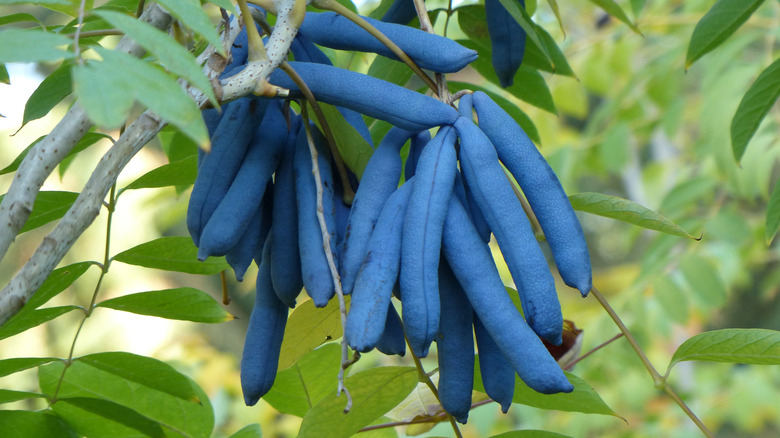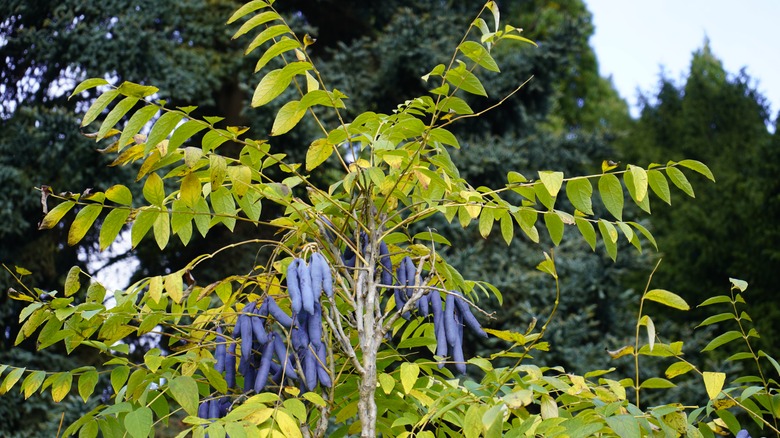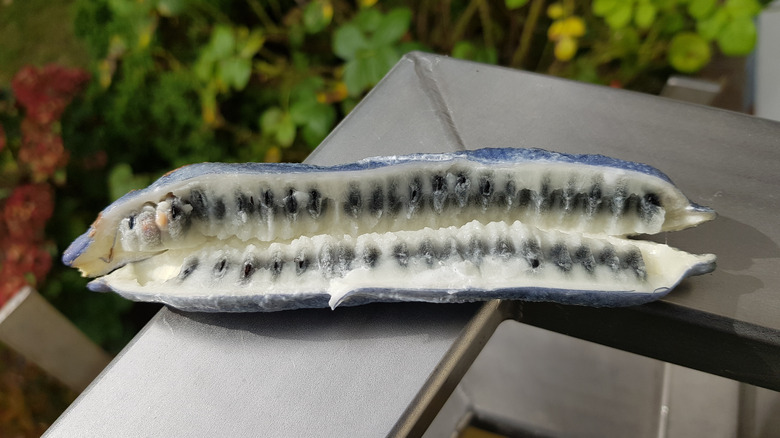The Blue Sausage Fruit Is Better Than It Looks
When René Redzepi talks about food, the world listens. The Danish chef presides over the kitchen at Copenhagen's celebrated Noma, which boasts three Michelin stars and regularly appears at the top of global restaurant rankings. Redzepi is best known for pioneering "New Nordic" cuisine, which focuses on seasonal, locally-sourced ingredients with a commitment to environmental sustainability. His approach has inspired innumerable cooks around the world, leading Food & Wine to label Redzepi "the world's most influential chef."
Redzepi is also well-known for his focus on plant-based food, telling Bon Appétit, "The dimension of flavors you find in roots and fruits and berries and mushrooms... it's just so much more diverse and exciting than the three or four animals we eat all the time." So, when Redzepi took to Instagram and posted a video of the obscure blue sausage fruit, food lovers everywhere took notice, albeit with a bit of skepticism over the fruit's rather unique appearance.
What is blue sausage fruit?
The blue sausage fruit could be said to look like many things, but the least risqué assessment would be that it resembles an especially large pea pod with royal blue skin (via Yale Nature Walk). It is also known as "dead man's fingers" due to its appendage-like appearance, color reminiscent of livor mortis effects, and the fact that the fruit ripens around Halloween. Neither dead man's fingers nor blue sausage fruit can be said to be particularly enticing labels, but one shouldn't judge it on name alone.
One reason that blue sausage fruits are not better known is that they rarely appear outside of their native lands. They are endemic to the woodlands and mountain ranges of western China, northern India, Nepal, Bhutan, and Myanmar, where they grow on leafy shrubs capable of reaching 20 feet in height, per the Missouri Botanical Garden. The fruit is a particularly popular food for the indigenous Lepcha tribe in the Indian state of Sikkim, but it is rarely eaten elsewhere. Even within its native lands, the blue sausage fruit is often grown solely for ornamental purposes, or to harvest its root, which is used in traditional Chinese folk medicine, according to Yale Nature Walk.
How to eat blue sausage fruit
The use of blue sausage fruit as food is now expanding beyond the Lepcha community, as the fruit's unusual look naturally draws attention. Chef Redzepi's Instagram post showcasing a blue sausage fruit has drawn hundreds of thousands of views, but its appearance is sometimes regarded with suspicion. All we can say is, don't judge a fruit by its peel. Beneath the blue sausage fruit's leathery skin is a soft pulp dotted with seeds, per the Missouri Botanical Garden. The fruits naturally begin to split open when they reach maturity, making it easy to get at the goodness within.
The blue skin itself is inedible, as are the hard seeds, but the translucent pulp is said to have a subtly sweet flavor similar to a melon (via Fine Dining Lovers). The best way to enjoy it is to scoop out the pulp and eat it straight, relishing the ripe flavor. However, if you have more ambitious aspirations, the blue sausage fruit can be used as a replacement in any melon recipe.


